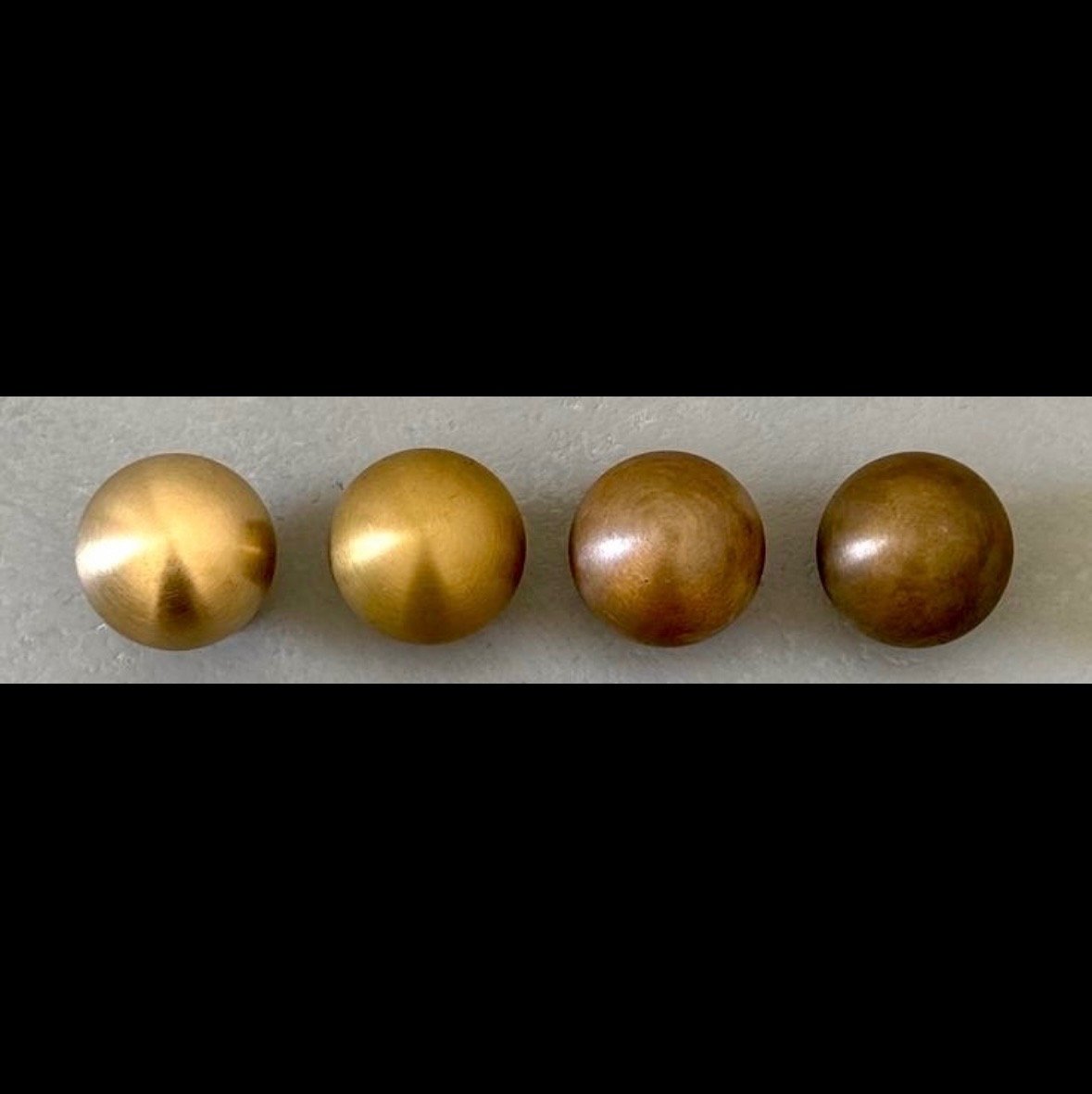There’s something irresistibly charming about materials that don’t just sit pretty—but shift, settle, and tell a story over time. Enter unlacquered brass.
This is brass in its most honest form—unsealed, unfiltered, and totally free to evolve. The finish starts out bright and brilliant, yes—but the real magic happens as it ages. With every touch, every bit of sunlight or moisture in the air, it begins to change. Slowly. Beautifully. Quietly becoming something warmer, deeper, and more complex.
No two pieces take the same path. That’s what makes it so good.
Why It’s Having a Moment (Again)
Unlacquered brass has stepped back into the spotlight—not because it’s flashy, but because it’s real. It brings soul to a room. In a newly built home, it can anchor a space and give it a sense of history. In a renovation, it complements both the old and the new with equal grace.
It’s not perfect—and that’s the point. The fingerprints, the darkening, the patina—that’s what gives it character. It’s like that pair of boots that only get better with wear.
From Bright to Burnished: How It Evolves
If you’ve never seen this process up close, it’s worth watching. Here’s a loose timeline:
-
Brand New: Gleaming and golden—almost too shiny.
-
Six Months In: A soft, warm glow starts to set in, especially in places that are frequently touched.
-
One Year Later: Rich gold and amber tones emerge. A lived-in elegance begins to take hold.
-
Years Down the Line: Depending on the environment, you might start to see hints of bronze, olive, or even navy at the edges.
Sunlight, humidity, fingerprints, even the way someone opens a cabinet—each interaction contributes to its evolution.
Where It Shines (Literally and Figuratively)
Unlacquered brass looks stunning against natural stone, wood cabinetry, or plaster walls. It tempers high-gloss materials and plays well with both warm minimalism and classic elegance. Picture it on a custom range hood, an oversized island pull, or flanking a marble sink in a powder room.
It’s especially beautiful when paired with handmade or organic materials. The softness of its tone keeps things grounded, while still bringing a refined edge.
To Polish or Not to Polish
Here’s the best part: you get to decide.
Want to keep things gleaming? A little brass polish does the trick. Prefer to let it age like a fine wine? Just leave it alone. Some choose to polish just the high-contact areas and let the rest develop naturally.
There’s no wrong answer—just personal preference. The finish is forgiving, flexible, and ever-changing.
A Few Things to Know
Yes, it will smudge. Yes, it will tarnish. And yes, that’s all part of the beauty. It’s not meant to be flawless. It’s meant to be alive.
Here’s the quick rundown:
-
Durable: Brass is strong and built to last.
-
Low-Maintenance: No constant polishing required (unless that’s your thing).
-
Versatile: Feels equally at home in a Parisian-inspired powder room or a minimalist modern kitchen.
-
Unique: Every knob, pull, or faucet becomes one-of-a-kind.
Unlacquered brass isn’t just a trend—it’s a reminder that some things get better with time. The more you live with it, the more you fall for it. And in a world that’s often obsessed with perfection, there’s something deeply luxurious about letting a material simply be what it is: beautiful, unpredictable, and perfectly imperfect.
